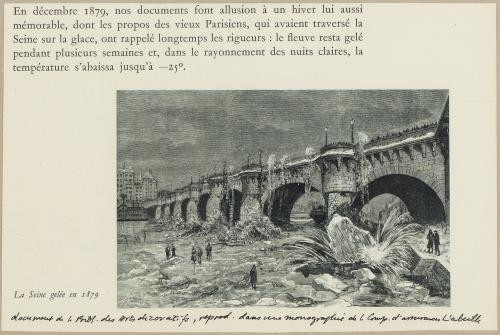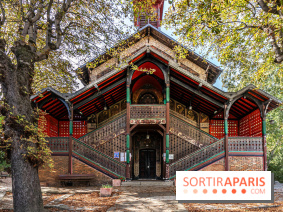In the annals of Paris, one winter stands out for its intensity and record-breaking cold. So what was this winter that left its mark on Parisian history, leaving behind chilling tales and indelible memories in the collective memory? It's an intriguing question that invites us to travel back in time and discover a Paris frozen in ice.
This historic winter is none other than that of 1879. A winter that is remembered as the symbol of an unprecedented climatic ordeal. Indeed, December of that year saw temperatures plummet to levels never recorded before. In the Parc Montsouris, an absolute record was set with a temperature of -23.9°C. This extreme cold was not an isolated episode; it characterized the entire month of December at the time, making 1879 the coldest month observed in Paris, all periods combined, since meteorological measurements began.
More than just a temperature record, this exceptional cold had a profound impact on the daily lives of Parisians. The city, known for its effervescence and dynamism, came to a standstill. The usually bustling streets were transformed into icy deserts. Markets, meeting places and daily activities were disrupted by the merciless cold snap.
The Seine, the capital's vital artery, did not escape this bitter cold. Transformed into a frozen river, it offered a spectacle both magnificent and surreal, testifying to the force of nature against which even a city as large as Paris seemed vulnerable. This rare phenomenon gave rise to some unique scenes, engraved in the city's history.
Paris: rediscover in pictures the last time the Seine froze over
These days, it's hard to imagine the river that flows through the capital frozen solid after days of bitter cold. Yet the last time the Seine was decked out in ice was back in 1956! Take a look at the pictures. [Read more]
The winter of 1879 was also a lesson in human resilience. Faced with this ordeal, Parisians had to show ingenuity and solidarity to overcome the difficulties. It was a time of challenge, but also of adaptation and innovation, when everyone had to find ways to keep warm, feed themselves and carry on living despite the extreme conditions.
Harsh winters are not a new phenomenon for Paris. In 975, the city was covered by a thick layer of snow until May (yes, yes!), leading to a devastating famine. Wolves were even spotted in the city, and the depth of the snow sometimes exceeded a man's height. Similar, albeit less extreme, episodes have recurred over the centuries, as in 1952 and 1963, reputed to be the longest winter of the 20th century.
The history of Paris is also punctuated by terrible episodes of frost. In 1407, the city experienced one of the coldest winters of the Middle Ages, with 66 consecutive days of frost. The Seine froze, and so did the wine in the barrels. The Petit-Châtelet and Saint-Michel bridges were swept away by the ice.
An analysis of average temperatures since 1678 reveals that the early 19th century was particularly cold. This cooling period began in the second half of the 18th century. However, after 1850, average temperatures began to rise again, with the 1990s marking the warmest decade of the century.
Years such as 1408, 1608, 1709 and 1830 are remembered for their extreme cold. These winters, characterized by their length and severity, had dramatic impacts on the lives of Parisians, from blockades of the Seine to severe food shortages.
The consequences of these winters were often disastrous. Thaws caused flooding, damaged bridges and affected crops around Paris. Famine usually followed these harsh winters, as in 1684, when harvests were so poor that even noble families were affected.
With just a few centimetres of snow today, the city is blocked, and it's hard to imagine those wintry scenes of yesteryear. However, by exploring the archives, we relive these historic moments, offering a unique perspective on the resilience and adaptation of this eternal city in the face of climatic challenges.
Bibliographical sources :
Recommended age
For all



















